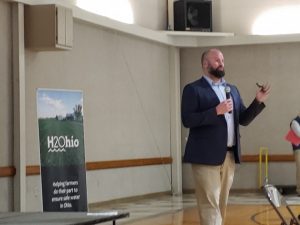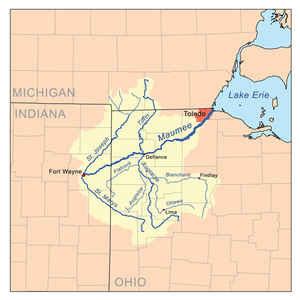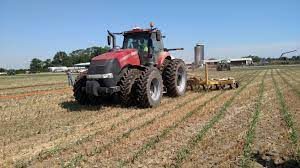Agronomy, Homepage Slider, Water Quality
The O.G. of Water Quality
By Dusty Sonnenberg, CCA, Ohio Field Leader, a project of the Ohio Soybean Council and soybean check-off.
It is not often that a 90’s rap lyric is used to describe the status of water quality initiatives, however, “in the case of Grand Lake St. Marys in 2021, the O.G. (original gangster) terminology is fitting,” said Jason Hoewischer, Ohio Farm Bureau Director of Water Quality and Research. This year has been a banner year for a body of water that has had the designation of a distressed watershed and issues with harmful algal blooms for the past 12 years. Currently the lake does not have a water quality advisory in place.

“While a primary reason cited for the lower levels of algae is the low rainfall totals year to date, credit also needs to be given to the actions taken by the agricultural community and organizations that came together to work towards finding a solution to the algal bloom.”
A similar phenomenon is being observed in Lake Erie. “The last five years we have seen progress in reducing dissolved reactive phosphorus (DRP). The monitoring charts of the levels of DRP are going down,” said Hoewischer. “The hope is with a somewhat normalized to dryer weather pattern combined with more conservation practices being implemented, we will continue to see that trend go down even further.”
The positive impact to water quality as a result of farmers taking ownership and taking action should not be understated. “Our farmers are making great efforts, and we have huge participation in programs such as Governor DeWine’s H2Ohio that committed $172 million to water quality, with a good portion of that going to conservation in the Western Lake Erie Basin,” said Hoewischer. “There are over 1 million acres enrolled in that program so far.”
Another program that is encouraging observers of the water quality discussion in Ohio is the progress that has been made by the Ohio Agricultural Conservation Initiative (OACI). “The OACI is a collaborative effort of Ohio’s agricultural commodity organizations (both crops and livestock) along with The Ohio State University Extension, and Ohio’s environmental and conservation organizations,” said Hoewischer. “They are showing a united front and developing sound solutions. There are a couple projects with OACI currently moving forward. A farmer certification program is the first, and it is doing just that…it certifies farmers in the practices that they are doing and encourages other farmers to compare their operations and how they might take steps to move up the conservation ladder. The second program is a farm field assessment. There are different types of surveys that have been conducted in the past to understand levels of farming practice adoption. This assessment looks at what is actually being done in specific fields. A survey was conducted across 450 farm fields in the Lower Maumee Watershed by county soil and water conservation districts to record production and conservation practices in specific fields. This comprehensive information will be useful moving forward to create baseline data for modeling efforts by the universities to provide accurate information to measure where we are currently at and how we are moving forward.”
Changing weather patterns are also a very real aspect of water quality. “While the rainfall totals are a little lower year to date, there are other factors to be considered,” said Hoewischer. “Records show that we have five fewer suitable days for field work in the spring and five fewer days in the fall due to the changing weather patterns compared to what had been experienced in the past. This presents some real challenges to farmers who are already working with limited windows of opportunity to get their crops in the ground in the spring and harvested in the fall. Add to that the reality that some of these new conservation practices that take more time to complete, and it can be a struggle for the farmer. That is one of the reasons we see the need for additional investment to scale up with equipment to balance these time and weather challenges.”